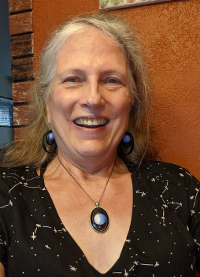
|
Jessica Mink
Center for Astrophysics | Harvard & Smithsonian 60 Garden St. Cambridge, Massachusetts 02138 Click here to e-mail me! Phone: (617) 495-7408 |
|
My name is Jessica Mink and I am a positional astronomer and software
developer at the Smithsonian Astrophysical Observatory Telescope Data
Center, where I have been writing software to reduce data from our
ground-based telescopes for over 30 years. I have a Batchelor's degree
from MIT in planetary astronomy and wrote my first data reduction
system for my Master's thesis there.
In 1976, I followed my then-spouse to Cornell, where I ended
up working in the lab of Carl Sagan, who was one of my major inpirations.
Six months later, I co-discovered the rings of Uranus with Jim Elliot and
Ted Dunham. Two years later, our group moved to MIT, where I modelled
planetary rings and occultations of stars which I predicted which led to the
discovery of Neptune's rings and detection of the extent of Pluto's atmosphere.
In 1984, I moved 3 miles up the Charles River to the SAO to develop a data pipeline for the Spacelab 2 Infrared Telescope, which flew on the space shuttle less that a year later. When funding ran out for that program, I helped start our Telescope Data Center, where I develop and run data reduction and analysis pipelines for ground-based spectrographs which are used to study Large Scale Structure, supernovae, binary stars, and exoplanets. Along the way, I wrote several commonly-used software packages for understanding images and spectra. Biking a total of 20 miles a day to and from work, I naturally became a bicycle activist. I helped found our statewide bicycle organization and the East Coast Greenway Alliance and have also worked on many local bike paths and greenways. Currently president of the Neponset River Greenway Council, I also work on urban open space and historic preservation. Ten years ago, I changed gender and have since worked on a variety of IDEA projects toward making astronomy, STEM, and the world more inclusive. My current inspirations are all of the woman astronomers that I know: grad students, post-docs, researchers, and those with whom I started my career who are now retired. |